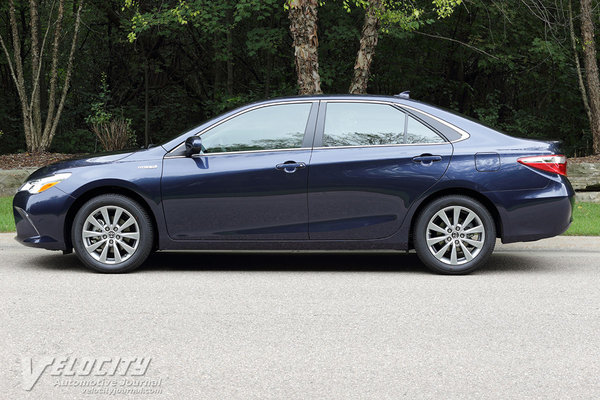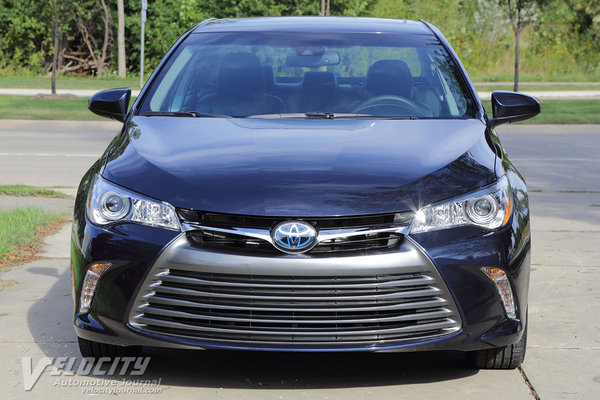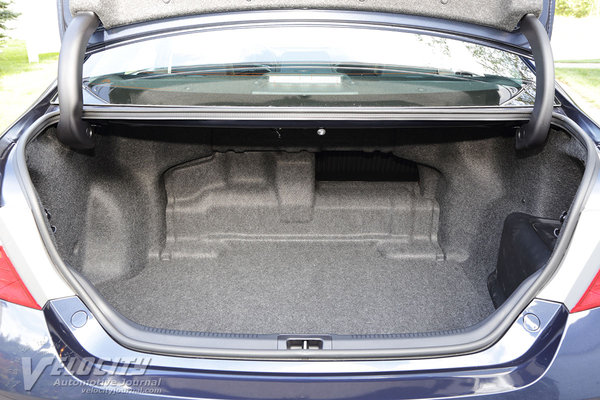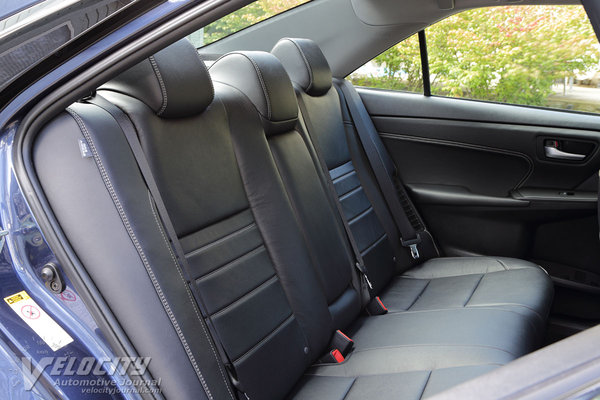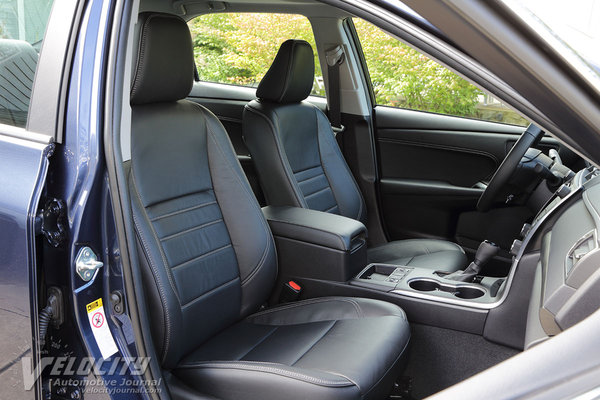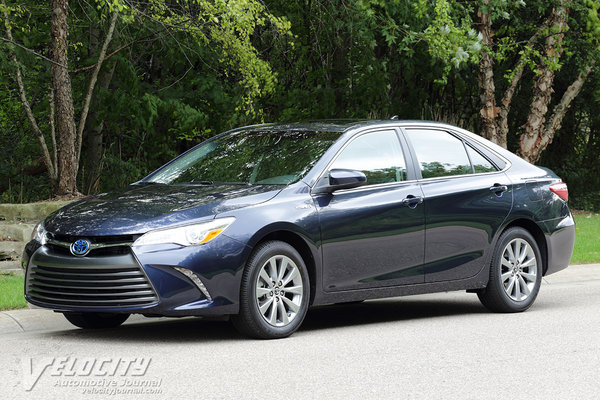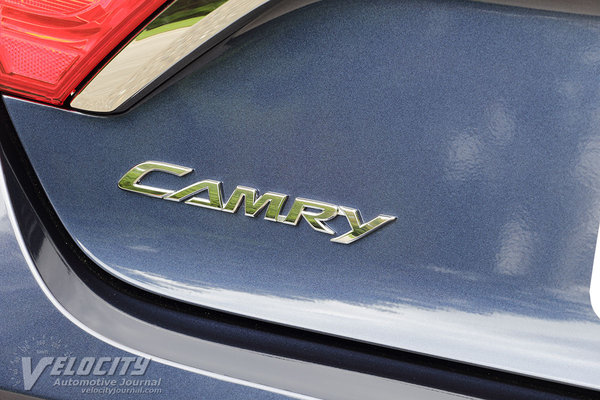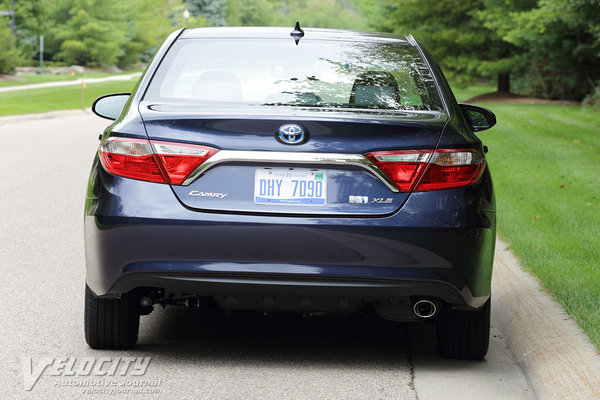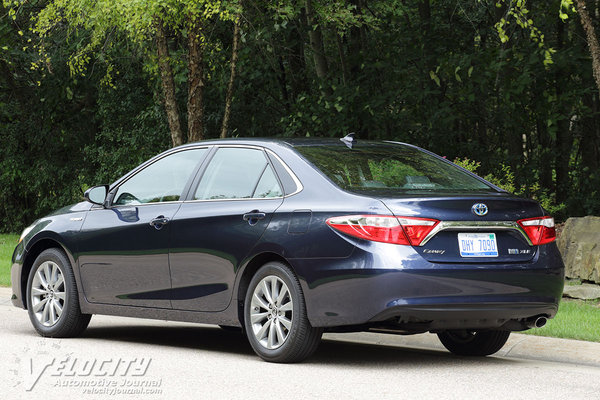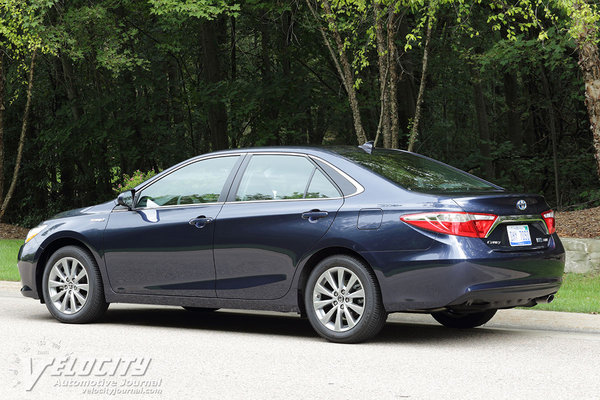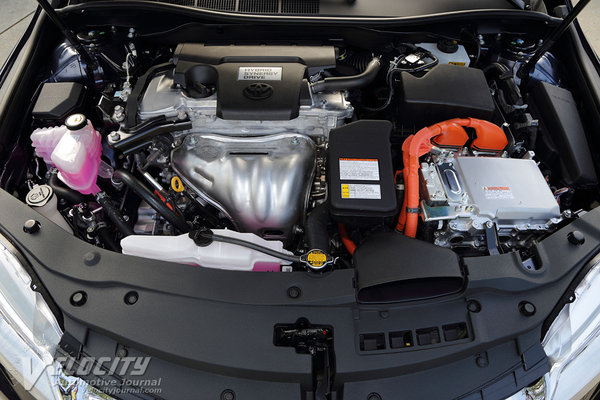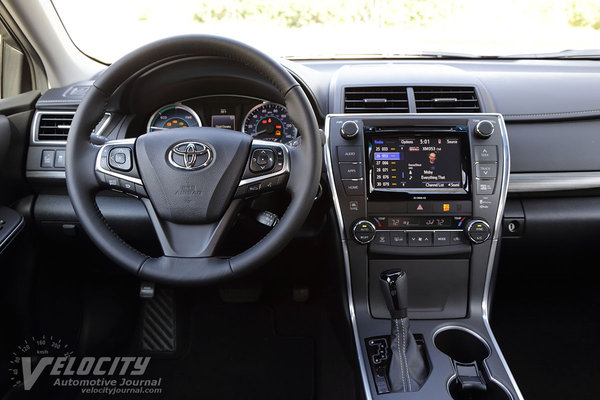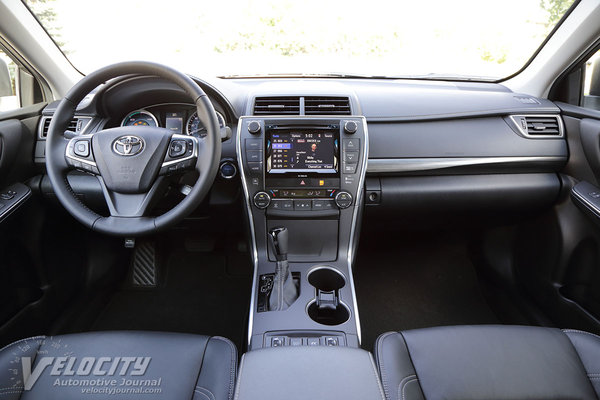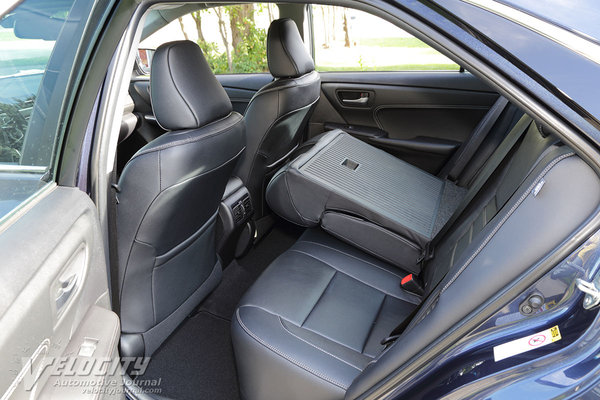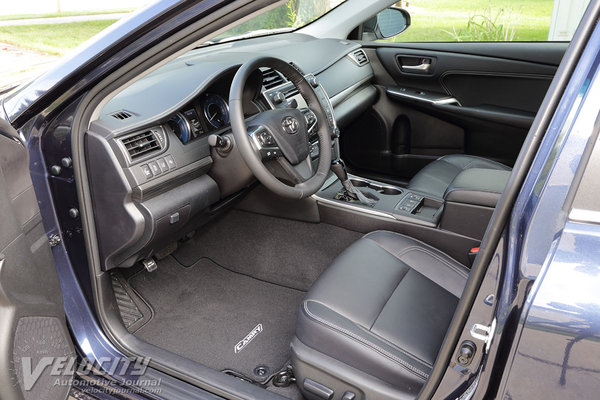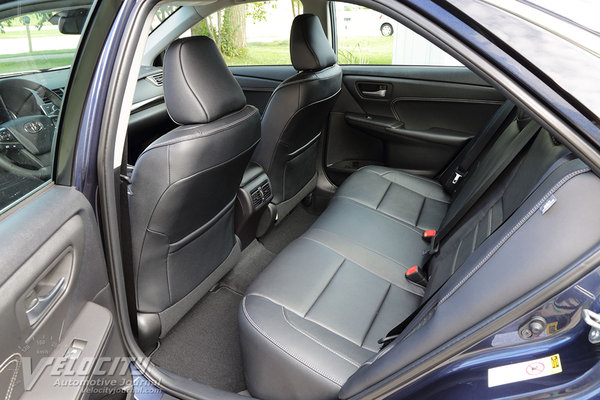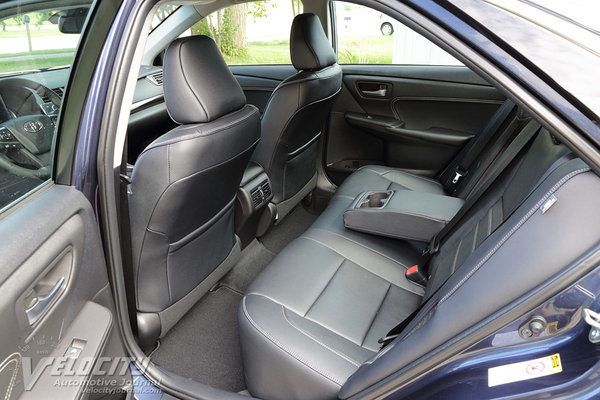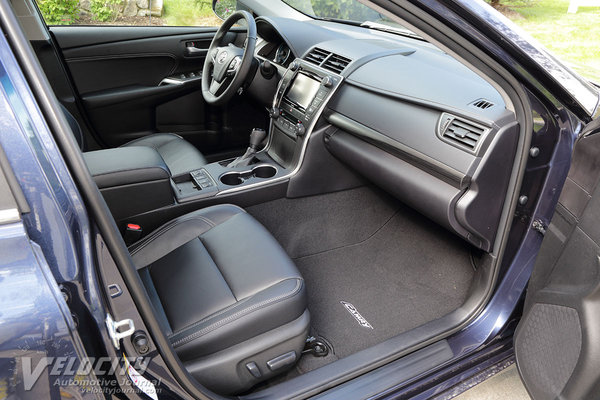2016 Toyota Camry XLE Hybrid
01/18/2016
Shahed Hussain
Toyota sells the most hybrid vehicles of any manufacturer, and unsurprisingly, offers the most hybrid models as well. Although the Camry pioneered the midsize hybrid sedan segment, Toyota now has competition from the Hyundai Sonata and Ford Fusion, both of which are available in hybrid variants. Now in its third generation, the 2016 Camry Hybrid is available in three models: LE, SE, and XLE. Pricing starts at $26,790 (LE Hybrid) and ranges up to $30,140 (XLE Hybrid). Depending on the model, opting for the Hybrid carries $3,720 - $4,155 premium over an equivalent non-hybrid Camry.
We tested a Camry XLE Hybrid equipped with the Safety Connect package ($515), Blind Spot Monitor with Rear Cross-Traffic Alert ($500), Convenience Package ($345), Entune Premium JBL Audio with Navigation ($1,330), Advanced Technology Package ($750), moonroof ($915), and Qi Wireless Charging ($75). The total MSRP, including the $835 delivery and handling fee added up to $35,405. We would probably skip the Safety Connect, Qi Wireless Charging, and Advanced Technology Package, subtracting $1,340 from the sticker price.
An Atkinson-cycle 2.5L inline-4 powers the Camry Hybrid. The all-aluminum four has dual overhead cams and dual VVT-I (variable valve timing). Rated at 156-bhp @ 5,700 RPM and 156 lb.-ft. @ 4,500 RPM, the Atkinson-cycle engine gives up 22-bhp and 14 lb.-ft. compared to the 2.5L inline-4 in other Camrys. Complementing the gasoline engine is a 105 kW AC motor with 199 lb.-ft. of torque from 0-1,500 RPM. A 244.8 V nickel-metal hydride battery pack with 6.5 ampere-hours capacity powers the AC motor, which can accelerate the Camry to a maximum speed of 25 MPH for up to 1.6 miles in EV mode. Combined system power is 200-bhp. Regenerative braking charges the battery pack, converting kinetic energy normally dissipated by the brakes into electricity. Both the gasoline engine and electric motor are mated to an electronically-controlled CVT (Continuously Variable Transmission). According to EPA estimates, the XLE Hybrid fuel consumption is rated at 40/38 (city/hwy.). Opting for the less expensive LE Hybrid boosts the ratings to 43/39 (city/hwy.). We averaged only 32 MPG in mixed city and highway driving, likely due to the short distances for most trips.
The Camry doesn't deviate from typical midsize sedan suspension design: MacPherson struts and stabilizer bar in front with a dual link layout and stabilizer bar at the rear axle. Brakes are 11.65 in. diameter ventilated front discs and 11.06 in. diameter solid discs at the rear. P215/55R17 all-season Bridgestone Turanza EL400 tires are mounted on 17-inch diameter alloy wheels. ABS and stability control (VSC) are standard. Steering is via a rack-and-pinion setup with electric assist.
Inside the Camry Hybrid, a few minor differences distinguish it from the non-hybrid variants. Instead of a tachometer, an analog gauge indicates powertrain status. Smaller coolant temperature and fuel level indicators are inset within the gauge cluster. Next to the speedometer is a center information display shows trip computer, audio, and other minor vehicle status items. The leather-wrapped steering wheel includes audio, phone and trip computer controls. Rectangular buttons on the left side of the dash engage/disengage the Blind Spot Monitor and stability control systems. On the center stack is an LCD display for the Entune(R) audio and navigation systems. Commonly used audio controls such as the volume and tuning knobs are within easy reach. Additional infotainment system buttons are located on either side of the display screen. Climate controls get a separate digital display along with dedicated knobs and buttons. A small storage bin ahead of the shift knob conceals the wireless Qi charging system, 12V outlet, along with a USB and auxiliary audio input. Next to the gated shift lever are buttons to engage ECO EV powertrain modes. Dual cupholders on the center console are sized for the large drinks Americans prefer.
The driver's seat has 8-way adjustability plus lumbar support, while the front passenger gets a basic 4-way adjustments. Heated front seats are much appreciated in colder climates, and the Camry's heaters warmed up in a few minutes. The front seats are firmly padded, but lack adequate lateral support. We could not find a comfortable position despite the multiple adjustments and lumbar support. Long-legged occupants may find the front seat cushions provide inadequate thigh support. The rear seat cushions are too short and low for adequate comfort, but passengers do benefit from ample legroom and headroom.
Driving the XLE Hybrid is a slightly different experience than a non-hybrid Camry, but for the typical customer, the hybrid system is relatively unobtrusive. On startup, the hybrid system takes a few seconds to activate before the vehicle starts moving. Another notable differences are the Stop-Start system that shuts off the gasoline engine when stopped at intersections, although this fuel-saving strategy is not unique to hybrid vehicles. Once underway, a faint high-pitched whine indicates the electric motor is accelerating the vehicle; a few seconds later the starter engages the gasoline engine, accompanied by a mild vibration that dissipates once the engine achieves operating RPM. The extra torque from the electric motor endows the Camry Hybrid with the satisfying low speed throttle response that the 2.5L inline-4 could never deliver alone. The continuously variable transmission (CVT) adjusts engine revs to achieve maximum fuel efficiency or acceleration, but there is no doubt that the hybrid system, not the driver, ultimately controls how power is sent to the front tires.
Toyota tuned the suspension for ride comfort as expected for a midsize family sedan. The Bridgestone touring tires deliver a compliant and quiet ride. The suspension tuning is intended for relaxed cruising on the interstate. Wind and tire noise are appropriately hushed on the highway. The Camry tracks accurately on the highway, with minimal effect from potholes and road imperfections. Because hybrid vehicles recoup energy dissipated during braking, initially depressing the brake pedal results in less braking than expected. As brake pressure increases, the disc brakes engage to provide additional braking power, comparable to a non-hybrid Camry. Aside from the minor differences in the braking characteristics, the Hybrid barely deviates from the competent and unexciting driving experience expected from a Camry.
Toyota's intention is to offer a Camry model for everyone searching for a midsize family sedan. The Camry Hybrid fills the slot for an affordable no-compromises 4-door for environmentally-conscious customers. The financial payback for a Camry Hybrid may be minimal in the era of inexpensive gasoline, but being "green" rarely coincides with saving money.

